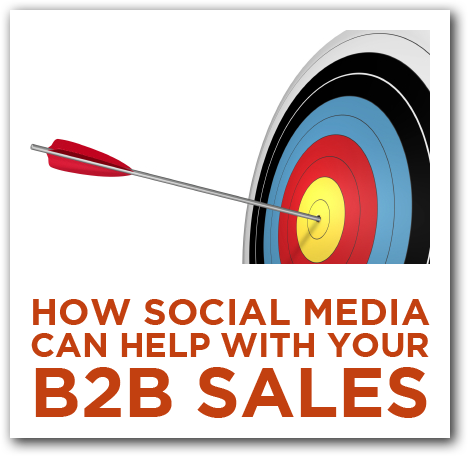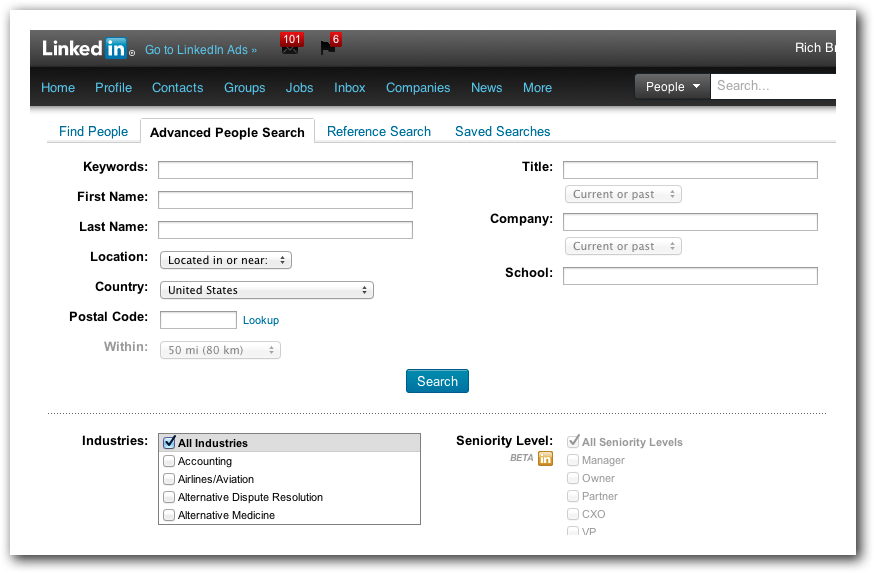 Social media can be used in almost any B2B (business to business) lead capture program and can increase the chances of landing the big sale. Here’s how you can improve your lead generation and close rate.
Social media can be used in almost any B2B (business to business) lead capture program and can increase the chances of landing the big sale. Here’s how you can improve your lead generation and close rate.
“Social media is fine for consumer brands, but it won’t work for me because we only sell to other businesses.”
Have you ever heard that before? Ever thought it yourself?
The other day I was speaking to a sales person who sold wood-burning furnaces to big institutions; he was convinced that social media couldn’t help him generate leads or land any sales. He believed that the CFOs and Heads of Maintenance (the two groups he had to convince in any organization) weren’t using social media…at least not for business.
Here are a few of the suggestions I shared with him about how he could leverage social media to increase the number of B2B sales he landed this year.
You seem like a smart man/woman/search engine bot; I’m guessing that you can extrapolate some of the ideas here into your own B2B lead generation program.
Start with a business blog.
Even people who don’t use social media as part of their job still do research online. Informational, educational blog posts often rank well for specific, long-tail search terms…the kind that C-level executives and their assistants often perform during research.
By creating quality content you can increase your online visibility and establish your credibility in the marketplace. One of the side benefits of blogging is that it can attract the attention of journalists looking for an expert to interview. Regardless of whether these journalists work for the mainstream or trade magazines, they can help establish you as the go-to person in your field.
You could create blog posts that address the questions your audience is asking, such as Wood Pellet Burners vs. Traditional Burners: Which is More Cost Effective?, or target the environmental benefits with a post called 10 Critical Steps to a LEED Certified Building.
(Pssst! This is the part where you extrapolate the lesson into your own industry.)
Network on LinkedIn.
LinkedIn is the world’s most popular social network for business, and you can use that to your advantage.
You could use the advanced people search to find CFOs and comptrollers who work in health care in your territory.
You could see which groups they belong to on LinkedIn and join up, so you get a better sense of what they struggle with on a day to day basis.
You could create targeted ads that only show up for Maintenance Supervisors that work for colleges within 50 miles of your home office.
If you are going to use advertising, I’d recommend offering a free white paper or report tied to a lead generation form. Each lead might end up costing you only a couple of dollars…one of the most cost effective lead generation tools out there.
Advertise on Facebook.
No, I don’t think that there are any CFOs or Maintenance Supervisors trolling the newsfeed for information on a wood-burning furnace for their university.
However, I do think some of these decision makers are on Facebook, if only to keep in touch with family members and make sure their kids aren’t posting anything stupid.
Did you know you could upload your email database to Facebook for targeted ads? You’ve probably already got an email list of prospects and customers. They may not want to get yet another email from you about your latest wood-pellet contraption, but you can stay front of mind with gentle reminders through the newsfeed or advertising…offering the same type of white paper/lead generation tactic you’re using on LinkedIn.
Even if they don’t click, they’ll see your ads all over Facebook, giving you more visibility at little to no cost (if you spend all your money on pay-per-click ads.)
And if they do click, you’e got a good chance to warm up that lead with additional, opt-in information.
Did you also know you could target people by job titles in Facebook? What if you targeted Maintenance Supervisors who also “liked” environmental groups? The audience may be small, but it would be very inexpensive to show them your ads.
Run Similar Ads on Google
Yes, Google Adwords isn’t social, but for this experiment I’d want to test out some Google Ads as well, and compare the results to my social advertising.
Again, don’t try and sell this audience on the first date. Instead, wine and dine them with free reports and white papers behind a lead capture form.
After a month or two you can see which of the three lead capture platforms worked best and converted the most traffic into leads. Then you can re-appropriate your ad buys moving forward.
The Takeaway
While I wouldn’t bet the farm, or put all my eggs in one basket, or do any other risky-barnyard inspired shenanigans, I would begin to add social media marketing and advertising into my B2B lead capture and sales program.
Here’s how I’d make these new platforms work for your B2B company.
- Create a publishing platform to educate your audience. Above I mention a blog, but other B2B companies have succeeded through podcasting or online videos. Find the platform that helps you connect best with your ideal customers.
- Use popular social networking platforms to advertise. Just because no one would “like” your company on Facebook doesn’t mean that the platform won’t work for you. It could be a much more cost-effective ad buy than TV, radio or print.
- Don’t try and go all the way on the first date. Rather than try and land a sale, instead, just try and get your prospect to read something that will help them make the right choice down the line. Tie a helpful article or research piece to a lead capture form and have your sales team follow up with the people who showed interest.
How have you tried to use social media in your B2B efforts? Did they work? Feel free to share any ideas (or questions) in the comments below.
And if you have a friend in B2B, please send them a link to this post or share it on your favorite social network!
